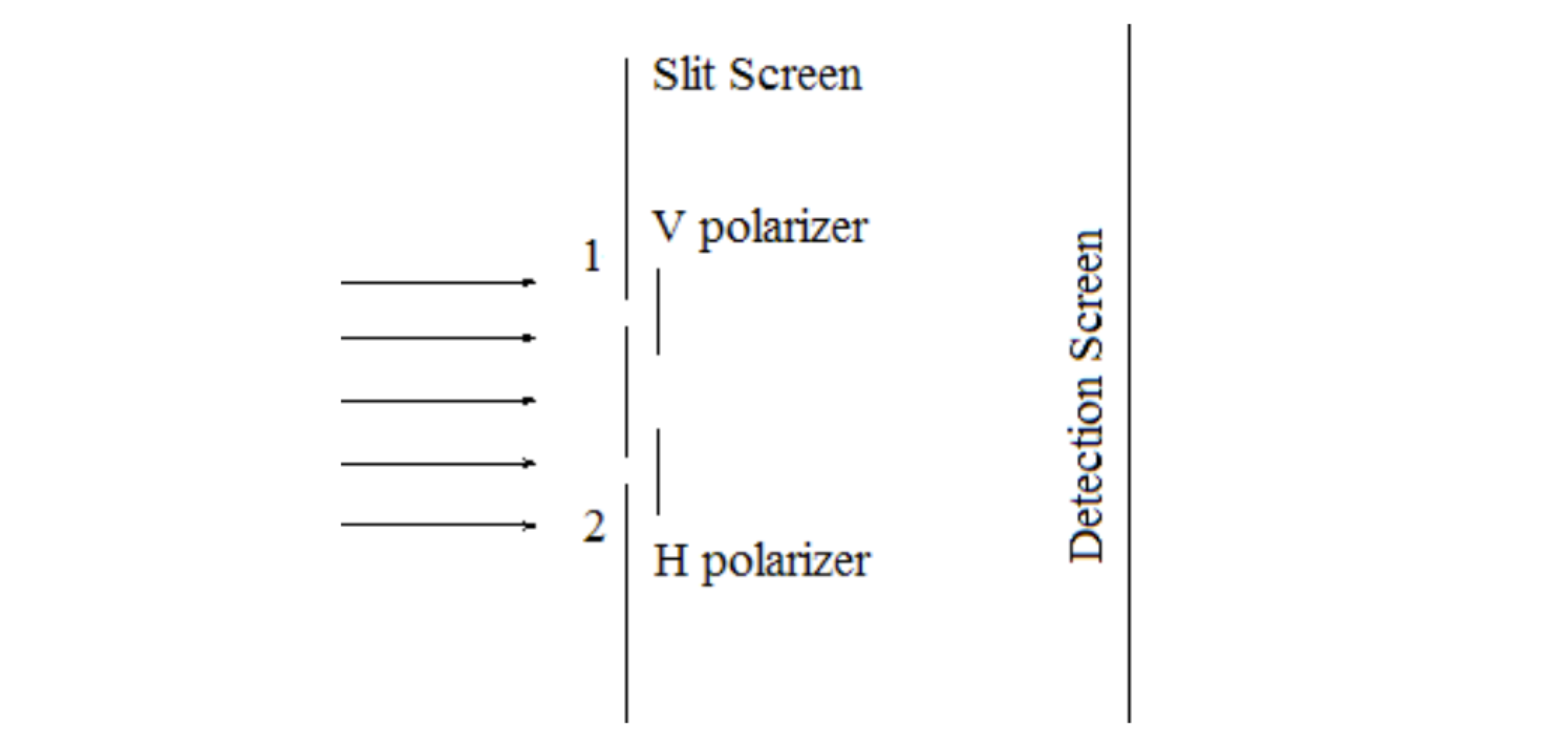A polarizing filter is placed in front of each slit with the two filters aligned perpendicularly to each other. My question is why does the produced pattern not have any dark bands? In terms of what happens to the waves to prevent destructive interference from taking place?
-
1$\begingroup$ Because you have guaranteed that any photon must go through only one or the other slit, so it cannot interfere with itself. $\endgroup$– Jon CusterCommented Feb 24, 2021 at 14:32
-
$\begingroup$ This is not correct. A 45 degree oriented photon can still go through both slits. $\endgroup$– my2ctsCommented Feb 24, 2021 at 19:14
-
$\begingroup$ @my2cts, you're in error. A single photon at 45 degrees polarization will go one way or the other, not both- but will have equal probability of going either way. $\endgroup$– S. McGrewCommented Feb 24, 2021 at 19:27
-
$\begingroup$ @S.McGrew Can you prove this? $\endgroup$– my2ctsCommented Feb 24, 2021 at 20:09
-
1$\begingroup$ The best way to prove it is in the lab. I can look up papers to try to change your mind, but so can you. $\endgroup$– S. McGrewCommented Feb 24, 2021 at 20:26
2 Answers
The part of the light which makes if through the $V$ polarizer has only vertical components of the electric field while the part going through the other slit has only horizontal electric field. On the detection screen both contributions are superimposed, but they don't interfere, because the horizontal field component doesn't influence the vertical component and vice versa.
-
$\begingroup$ So that means for two waves to interfere they need to be polarised in the same plane, otherwise, they cannot interfere? Correct me if I'm wrong. $\endgroup$ Commented Feb 25, 2021 at 8:30
-
$\begingroup$ @LeoNardikin This is correct for linearly polarized light. For circularly polarised light the handedness needs to be the same. $\endgroup$– A. P.Commented Feb 25, 2021 at 8:53
-
Since the light coming from the two slits is orthogonally polarised, it does not interfere. The relative phase has no effect on the intensity at the screen.

